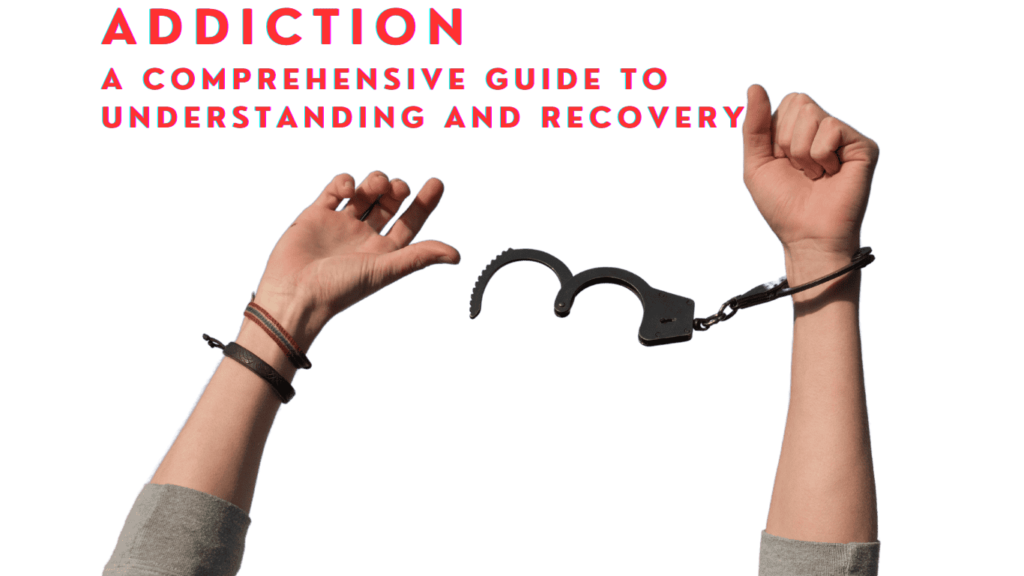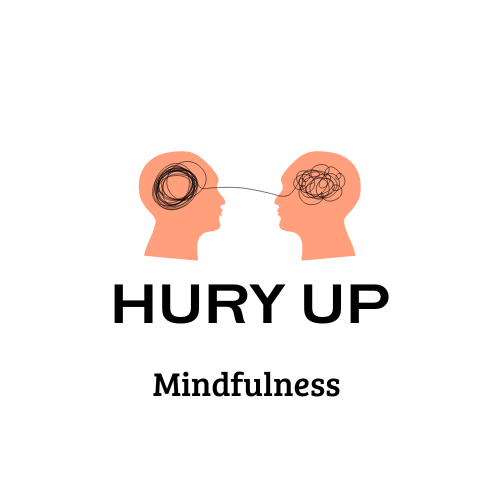Addiction A Comprehensive Guide to Understanding and Recovery Introduction Addiction is a pervasive issue that transcends borders, ages, and demographics. It can take many forms, from substance use like alcohol and drugs to behavioral patterns such as excessive gaming, gambling, or even social media usage. Understanding addiction is the first step towards tackling its […]
Addiction

A Comprehensive Guide to Understanding and Recovery
Introduction
Addiction is a pervasive issue that transcends borders, ages, and demographics. It can take many forms, from substance use like alcohol and drugs to behavioral patterns such as excessive gaming, gambling, or even social media usage. Understanding addiction is the first step towards tackling its effects, not only on the individual but also on their family and community.
In this article, we dive deep into the nature of addiction, its types, causes, and far-reaching effects. We also provide actionable strategies and resources to help individuals on the road to recovery.
What Is Addiction?
Addiction is more than just a bad habit; it is a chronic brain disorder characterized by an inability to resist certain behaviors or substances despite harmful consequences. Addiction rewires the brain, making it difficult for the individual to stop or control their actions.
Key Features of Addiction:
- Cravings: Intense desire to engage in the behavior or consume the substance.
- Loss of Control: Difficulty in stopping despite wanting to quit.
- Negative Consequences: Physical, emotional, or social harm caused by the behavior.
Keyphrase: “What are the symptoms of addiction?”
Types of Addiction
Addiction is broadly categorized into two types: Substance Addiction and Behavioral Addiction.
Substance Addiction
- Alcohol: One of the most common addictions worldwide, with severe health and social implications.
- Drugs: Includes both legal substances (e.g., prescription opioids) and illegal ones (e.g., cocaine, heroin).
- Tobacco: Smoking remains a leading cause of preventable death globally.
Behavioral Addiction
- Gambling: Obsessive betting, leading to financial and emotional distress.
- Internet and Gaming: Excessive screen time affecting mental health and productivity.
- Shopping Addiction: Uncontrolled spending beyond means, leading to debt and anxiety.
What Causes Addiction?
Addiction is multifaceted, stemming from biological, psychological, and environmental factors.
Biological Factors:
- Genetic predisposition plays a significant role in developing addiction.
- Dopamine release during addictive behaviors reinforces habits.
Psychological Triggers:
- Stress, depression, or unresolved trauma can drive people towards addiction as a coping mechanism.
Environmental Influences:
- Peer pressure and lack of support systems increase the risk of addiction.
- Easy access to addictive substances or behaviors can also be a contributing factor.
Keyphrase: “What causes addiction, and how can it be prevented?”
Effects of Addiction on Life
Physical Health:
- Addiction can lead to liver damage (alcohol), lung diseases (smoking), or even overdose (drugs).
- Long-term addiction weakens the immune system, making individuals prone to illnesses.
Mental Health:
- Anxiety, depression, and paranoia are common in individuals with addiction.
- Chronic addiction may lead to suicidal thoughts or behaviors.
Social Impact:
- Strained relationships with family and friends.
- Loss of employment or financial instability.
Steps to Overcome Addiction
1. Recognize the Problem
Acknowledging the issue is the first step toward recovery. Denial is a significant barrier to change.
2. Seek Professional Help
- Therapy: Cognitive Behavioral Therapy (CBT) is highly effective.
- Rehabilitation Centers: Provide structured programs for withdrawal and recovery.
3. Join Support Groups
Organizations like Alcoholics Anonymous (AA) and Narcotics Anonymous (NA) offer peer support.
4. Adopt Healthy Habits
- Exercise, meditation, and hobbies can replace addictive behaviors.
- Healthy diets support physical recovery.
5. Relapse Prevention
- Identify triggers and avoid high-risk situations.
- Build a solid support network of family and friends.
Keyphrase: “Steps to overcome addiction and prevent relapse.”
Frequently Asked Questions (FAQs)
Q1: What is the most addictive substance?
A: Nicotine, heroin, and alcohol are among the most addictive substances.
Q2: Can behavioral addictions be as harmful as substance addictions?
A: Yes, behavioral addictions like gambling or gaming can disrupt mental health and lead to financial and social consequences.
Q3: How long does recovery from addiction take?
A: Recovery is a lifelong process, but significant improvement can be seen within months with consistent effort.
Q4: Are there medications for treating addiction?
A: Yes, medications like Methadone (for opioid addiction) and Naltrexone (for alcohol addiction) can help.
Q5: Is relapse a sign of failure?
A: No, relapse is a common part of recovery. It provides an opportunity to reassess and strengthen the recovery plan.
Resources for Help
- Substance Abuse and Mental Health Services Administration (SAMHSA): Visit Here
- National Institute on Drug Abuse (NIDA): Visit Here
- Psychology Today (Therapist Finder): Visit Here
Conclusion
Addiction may be a daunting challenge, but it is not insurmountable. With the right mindset, resources, and support, recovery is achievable. Take the first step today – recognize the problem, seek help, and work towards a healthier future.
Remember:
“Recovery is not a destination; it is a journey. Each step forward counts.”
The concept of emotional sobriety emphasizes achieving emotional stability and resilience during recovery from addiction. It’s not just about abstaining from substances but also learning to regulate emotions, manage stress, and build healthier relationships.
Why Emotional Sobriety Matters:
- Foundation for Long-Term Recovery: Emotional sobriety helps individuals maintain recovery by addressing underlying emotional triggers that could lead to relapse.
- Improved Relationships: Managing emotions fosters healthier communication and stronger connections with loved ones.
- Stress Management: Learning to navigate stress and adversity without resorting to addictive behaviors is crucial.
- Enhanced Self-Awareness: Emotional sobriety involves recognizing and processing feelings instead of suppressing or avoiding them.
How to Cultivate Emotional Sobriety:
- Mindfulness and Meditation: These practices help individuals stay present and manage overwhelming emotions.
- Therapy: Techniques like Cognitive Behavioral Therapy (CBT) can help identify and reframe negative thought patterns.
- Support Groups: Programs like AA or NA often discuss emotional sobriety as part of the 12-step process.
- Journaling: Reflecting on emotions helps track progress and recognize emotional triggers.
What Does It Take to Get Sober?
Getting sober is a deeply personal journey that varies from person to person. It involves overcoming physical dependencies, addressing emotional triggers, and building a support system. Here’s a look into how three people coped with the process:
1. Building a Support Network
Jane’s Journey:
Jane shared that her recovery hinged on creating a network of people she could rely on. She joined a 12-step program and surrounded herself with supportive friends and family. Having people to turn to during tough times helped her stay accountable and maintain her sobriety.
- Key Takeaway: Recovery thrives in community. Whether through support groups or close relationships, a robust support system is essential.
2. Embracing Therapy and Professional Help
Tom’s Strategy:
Tom turned to therapy to understand the root causes of his addiction. He worked with a counselor to address trauma and learn healthier coping mechanisms. Medication-assisted treatment also helped him through the initial stages of withdrawal.
- Key Takeaway: Professional guidance can provide tools to address the mental and physical challenges of recovery.
3. Developing New Habits and Hobbies
Maria’s Method:
Maria found solace in fitness and art. Exercise helped her manage stress and improve her mood, while painting became a way to channel her emotions creatively. Replacing old habits with fulfilling activities made sobriety sustainable.
- Key Takeaway: Sobriety isn’t just about quitting—it’s about finding new passions and ways to enrich your life.
Common Challenges and How They Overcame Them
- Cravings and Triggers: Mindfulness techniques like meditation helped manage cravings.
- Relapse: They treated relapse as a learning opportunity rather than failure, focusing on what triggered it and how to prevent it in the future.
- Loneliness: Connecting with others in similar situations reduced feelings of isolation.
Resources for Support
- Alcoholics Anonymous (AA): Offers a structured 12-step recovery program.
- SMART Recovery: Provides self-management tools for addiction recovery.
- National Helplines: Reach out for immediate guidance and support.
Sobriety is more than abstaining; it’s about transforming your lifestyle, mindset, and emotional well-being. Each person’s journey is unique, but the core principles—support, self-awareness, and resilienceare universal.
Understanding Enabler Behavior: Motivations, Signs, and Strategies for Change
What is Enabler Behavior?
Enabler behavior refers to actions or attitudes that unintentionally support or perpetuate someone else’s destructive or harmful behaviors. This often occurs in relationships involving addiction, irresponsibility, or unhealthy dependency. While enablers usually act out of care or fear of conflict, their actions can inadvertently worsen the situation.
Motivations Behind Enabler Behavior
- Fear of Conflict: Avoiding disagreements or confrontations by accommodating the harmful behavior.
- Misplaced Loyalty: Believing that protecting a loved one from consequences demonstrates care and support.
- Sense of Responsibility: Feeling obligated to “fix” or rescue someone.
- Guilt: Thinking they might have contributed to the individual’s problems and overcompensating.
Signs of Enabling
- Making excuses for someone’s harmful behavior to shield them from consequences.
- Taking over responsibilities the individual should handle themselves.
- Providing financial or emotional support without addressing the root issue.
- Ignoring or downplaying the seriousness of their actions.
- Avoiding discussions about change or recovery due to fear of conflict.
Impact of Enabling Behavior
- On the Enabler: Leads to frustration, burnout, and emotional strain.
- On the Enabled Individual: Reinforces destructive patterns, delaying accountability and recovery.
Strategies for Change
- Acknowledge the Behavior: Recognizing enabling patterns is the first step toward change.
- Set Boundaries: Clearly define acceptable behaviors and enforce consequences for crossing boundaries.
- Encourage Accountability: Allow the individual to face the natural outcomes of their actions.
- Seek Support: Join support groups like Al-Anon or consult with a therapist for guidance.
- Focus on Self-Care: Prioritize your emotional and mental well-being while navigating the relationship.
Key Takeaways
- Enabling stems from care but can perpetuate harm.
- Change requires self-awareness, clear boundaries, and encouraging responsibility.
- Seeking external help can provide tools for healthier dynamics.

